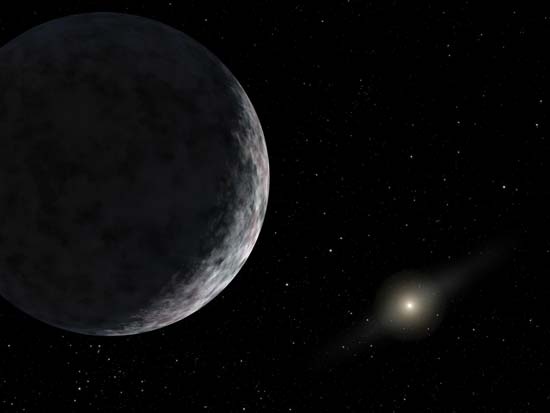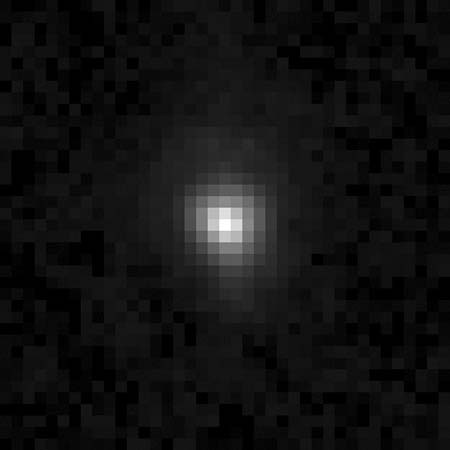Eris
Greek and Roman mythology
Roman Discordia
in Greco-Roman mythology, the personification of strife. She was called the daughter of Nyx (Night) by Hesiod, but she was sister and companion of Ares (the Roman Mars) in Homer's version. Eris is best known for her part in starting the Trojan War. When she alone of the gods was not invited to the marriage of Peleus and Thetis, she threw among the guests a golden apple inscribed “For the most beautiful.” Hera, Athena, and Aphrodite each claimed it, and Zeus assigned the decision to Paris, then a shepherd on Mount Ida. Paris awarded the apple to Aphrodite, who then helped him win Helen of Troy. In the war that resulted, Hera and Athena remained implacable enemies of Troy.
astronomy
 large, distant body of the solar system, revolving around the Sun well beyond the orbits of Neptune and Pluto in the Kuiper belt. It was discovered in 2005 in images taken two years earlier at Palomar Observatory in California, U.S. Before it received its official name, Eris was known by the provisional designation 2003 UB313; it was nicknamed “Xena” by its discoverers and also briefly termed the “10th planet.”
large, distant body of the solar system, revolving around the Sun well beyond the orbits of Neptune and Pluto in the Kuiper belt. It was discovered in 2005 in images taken two years earlier at Palomar Observatory in California, U.S. Before it received its official name, Eris was known by the provisional designation 2003 UB313; it was nicknamed “Xena” by its discoverers and also briefly termed the “10th planet.” Its diameter of roughly 2,500 km (1,550 miles) makes Eris slightly larger than Pluto. Both it and Pluto are classified as dwarf planets under categories defined in August 2006 by the International Astronomical Union for bodies orbiting the Sun. Both bodies are also classified as plutoids, members of a subcategory created by the IAU in June 2008 for dwarf planets that are farther from the Sun than Neptune. (For discussions of these categories, see planet.) Eris revolves once about every 560 Earth years in a highly tilted, elliptical orbit. From its spectrum its surface appears to be coated with white methane ice. Eris has at least one moon, Dysnomia, about one-eighth its size, with an orbital period about two weeks long.
Its diameter of roughly 2,500 km (1,550 miles) makes Eris slightly larger than Pluto. Both it and Pluto are classified as dwarf planets under categories defined in August 2006 by the International Astronomical Union for bodies orbiting the Sun. Both bodies are also classified as plutoids, members of a subcategory created by the IAU in June 2008 for dwarf planets that are farther from the Sun than Neptune. (For discussions of these categories, see planet.) Eris revolves once about every 560 Earth years in a highly tilted, elliptical orbit. From its spectrum its surface appears to be coated with white methane ice. Eris has at least one moon, Dysnomia, about one-eighth its size, with an orbital period about two weeks long.- Ainsworth, William Harrison
- Ainu
- Ai Qing
- air
- air brake
- Airbus Industrie
- Air Canada
- air-conditioning
- aircraft carrier
- air-cushion machine
- air de cour
- Airedale terrier
- air embolism
- Aire, River
- airfoil
- air force
- airframe
- Air France
- airglow
- air gun
- Air India
- Air India Flight 182 disaster
- air law
- air lock
- airmail